NYC’s Forgotten ‘War on Christmas Trees’
Discover how an obscure holiday crackdown affects festive street vendors today!


Manhattan is often described as a grid, a series of rectangular blocks stacked around each other. That description generally holds true except for Broadway. The Great White Way rolls the length of Manhattan at an angle, from South Ferry to the Broadway Bridge at the tip of Manhattan, slicing through rectangles to create a dozen oddly shaped spaces, that, despite the lack of right angles, are known as “squares.” Some are well known, some recent, and some all but forgotten. Each has a story that reflects the unique history, society, commerce, and personality of old (and new) New York. Come along on a 14-mile virtual walk up the island of Manhattan to explore those 12 squares along Broadway.
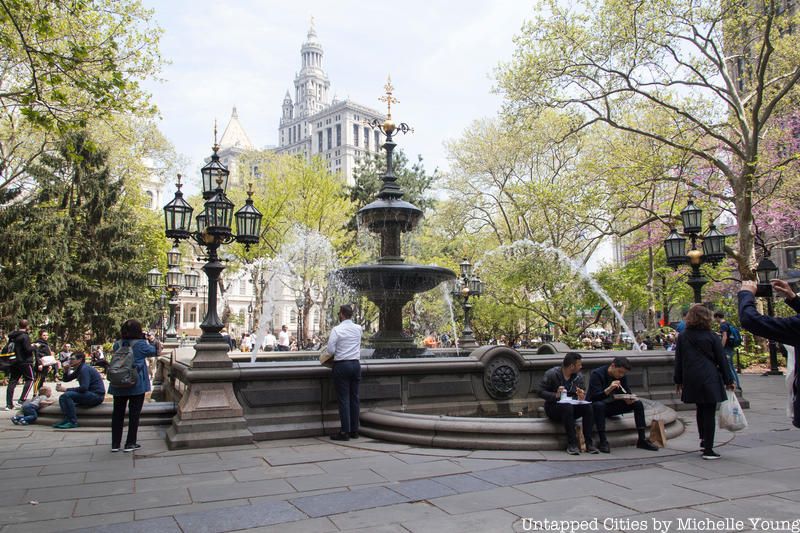
At Broadway and Murray Street, at an entrance to City Hall Park, is the most recent and smallest square on Broadway – Steve Flanders. Mr. Flanders was a New York journalist who covered City Hall. Starting his career at The Herald Tribune, he then moved to ABC News, NBC, and finally to WCBS as an on-air political commentator. Mr. Flanders, on his way to City Hall, suffered a fatal heart attack at the site.
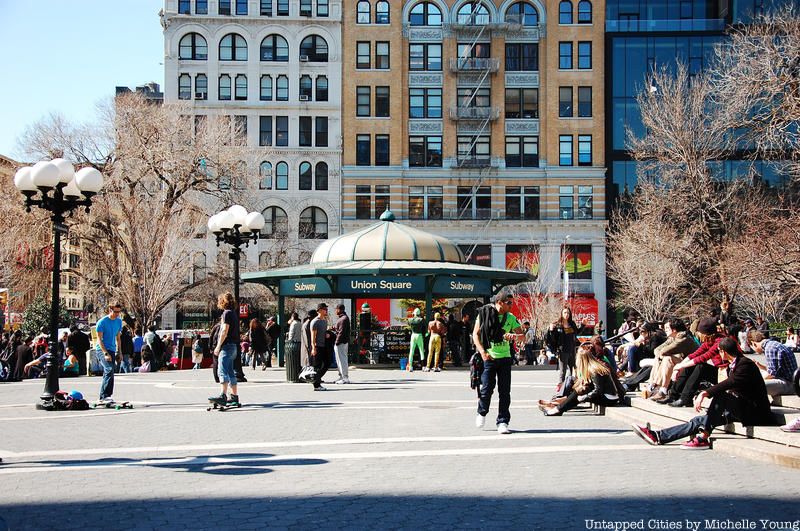
The first officially created square in Manhattan was Union Square at 14th street. Usually associated with union activity and parades, Union Square was actually so named because it was the point at which Broadway and the other major road of the 1800s, the Bowery, formed a union. Originally the center for the entertainment industry, with hotels, boarding houses, offices, and theaters bordering the square, it later became a retail center. It is probably best known today for its farmers’ market on the weekend.
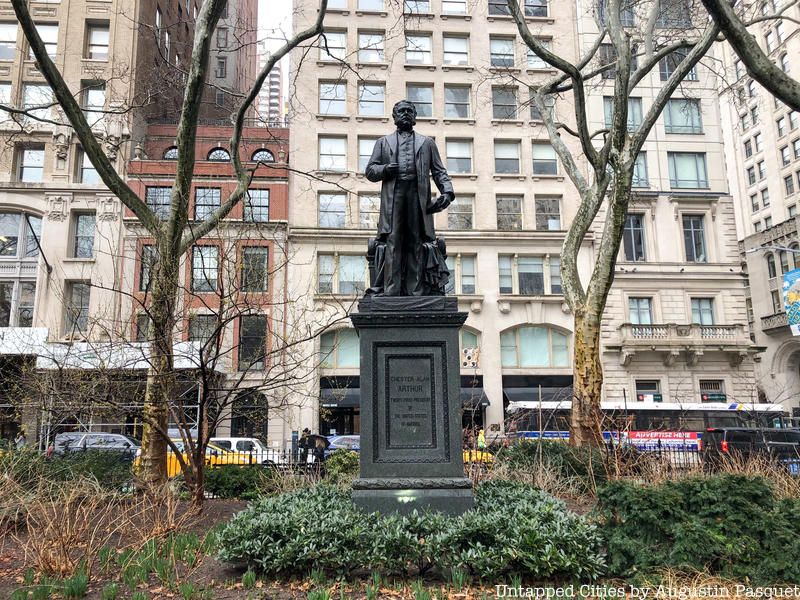
Madison Square was named after the Madison Cottage, a tavern and popular travel stop along Broadway, and probably after President James Madison. Originally used as a regimental training ground, it has since become associated with famous buildings: the original Madison Square Gardens, the MetLife building (now home to the swanky New York Edition hotel), and at the southeast corner and arguably the city’s most unusual building and the first skyscraper built in Manhattan, the Flatiron Building.
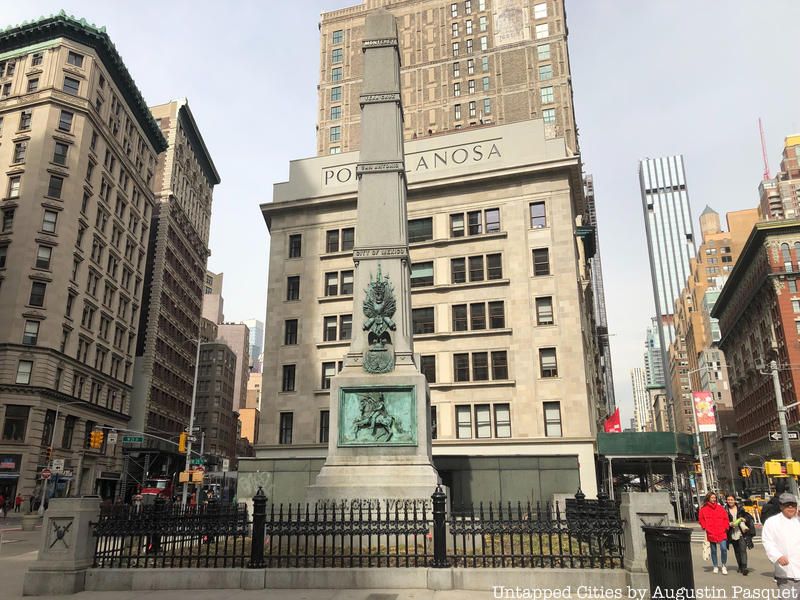
Tucked away at 25th Street and Broadway is General Worth Square. Although Worth Street is a more recognizable reminder, it is here where General William J. Worth is interred. His military career was made during the War of 1812 and culminated as commander of the U.S. Military Academy. Another highlight of his career was being placed under arrest by his superior for outrageous and egotistical behavior. His monument stands alone in the square.
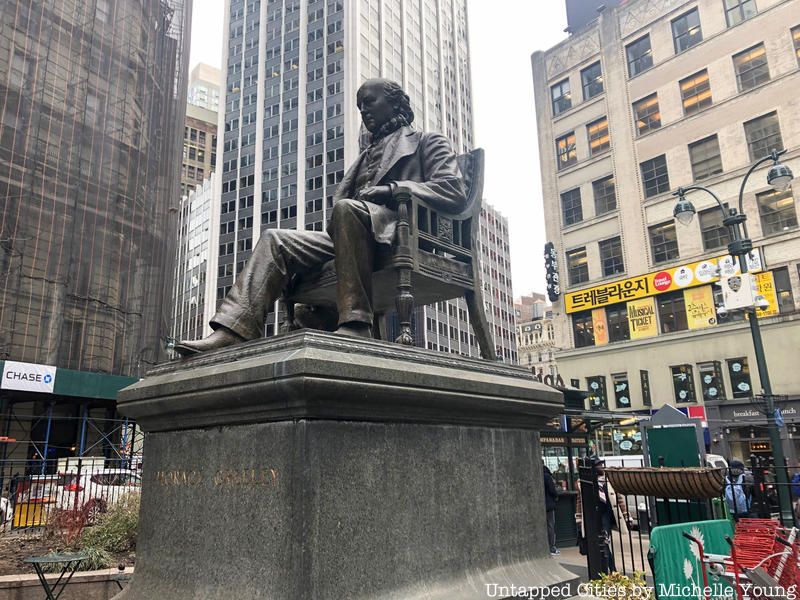
Horace Greely was the founder of The New York Tribune, originator of the advice “Go West, Young Man,” champion of Senator Abe Lincoln, and one of the founders of the Republican Party. Greeley Square is at 33rd Street and Broadway. His advice referred to a series of editorials he published that encouraged tradesmen to flee New York City at a time of dire unemployment.
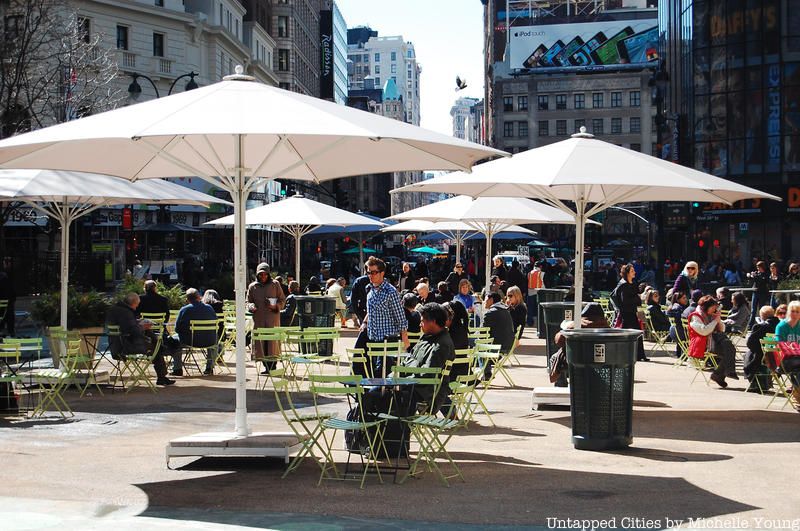
Herald Square, at 34th Street, was named for the Herald Building that stood at the intersection of Broadway and Sixth Avenue. The Herald Building has been taken down, but the monument erected includes the statues of Minerva and the Bell Ringers, who were originally atop the north side of the building. Herald Square was from its earliest development a retail center with stores like Saks, Gimbels, Macy’s, and the original Tiffany clustered around the area. Now, only Macy’s remains.
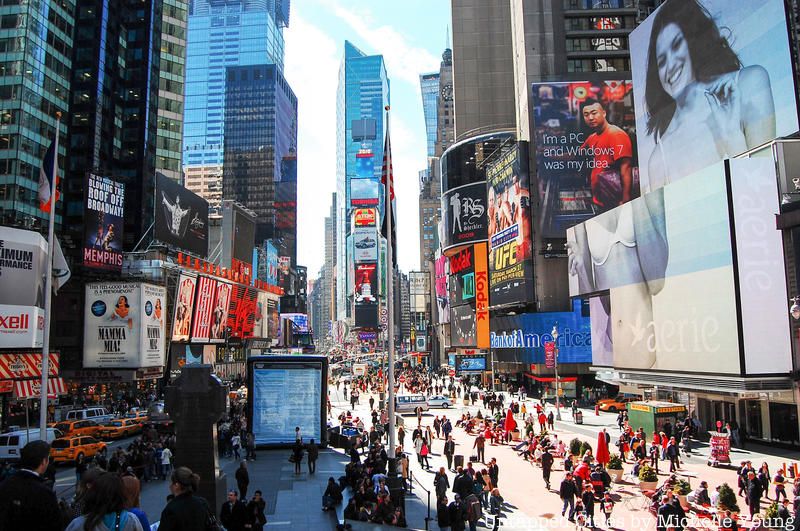
Times Square, the crossroads of the world, was originally an area that catered to the carriage trade, literally. Carriages, leather works, and blacksmiths populated the area. At the time, the turn of the 20th century, Times Square was known as Longacre Square, so named after a street in London that provided similar services. It was renamed after the New York Times, which moved its offices to 1 Times Square, in 1904. Arguably, Times Square is the most popular New York tourist attraction, and certainly the brightest.
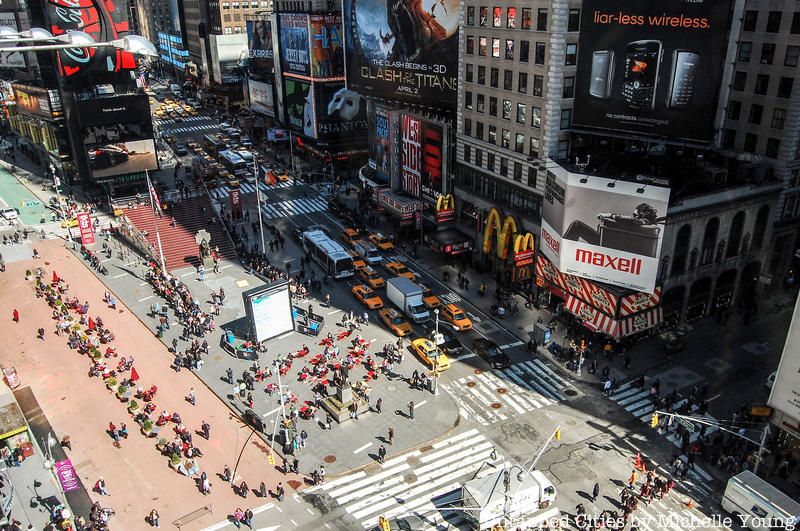
Duffy Square, like many other squares in Manhattan, was dedicated to a participant in World War I – Father Francis P. Duffy – Chaplain to the “Fighting Sixty-Ninth.” The 69th is the city’s Irish heritage regiment having answered the call to duty since the Civil War and always leads the St Patrick’s Day Parade. Father Duffy distinguished himself by seeing service in the Spanish-American War and World War I. It is probably best known today as the site for discount theater TKTS. His square is on W. 47th street at the intersection of Broadway and 7th Avenue.
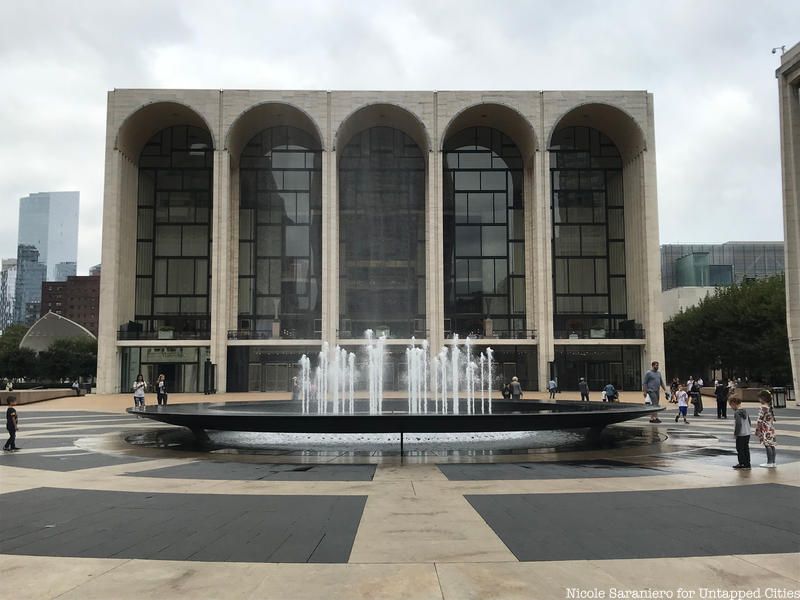
Lincoln Square, at 66th and Broadway, was thought to be originally named for a theater that stood on the site. The theater was possibly named for the 16th president — a welcome visitor and speaker in New Your City before and after his election. The square became less visible when it was integrated into the 66th Street – Lincoln Center subway station.
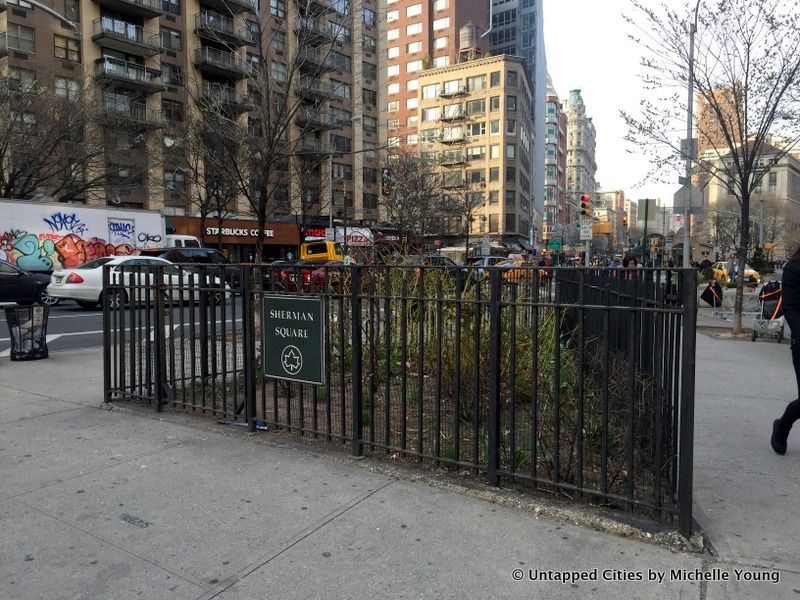
Sherman Square, at 70th and 71st Streets and Broadway, was named for the Civil War General William Tecumseh Sherman. In addition to such noteworthy accomplishments as his March to the Sea and burning of Atlanta, General Sherman was a West Point graduate, businessman, and lawyer. The square was dedicated to him because of its proximity to his New York residence, where he died. His statue, originally in his Square, is now on the Grand Army Plaza in front of the Plaza Hotel.
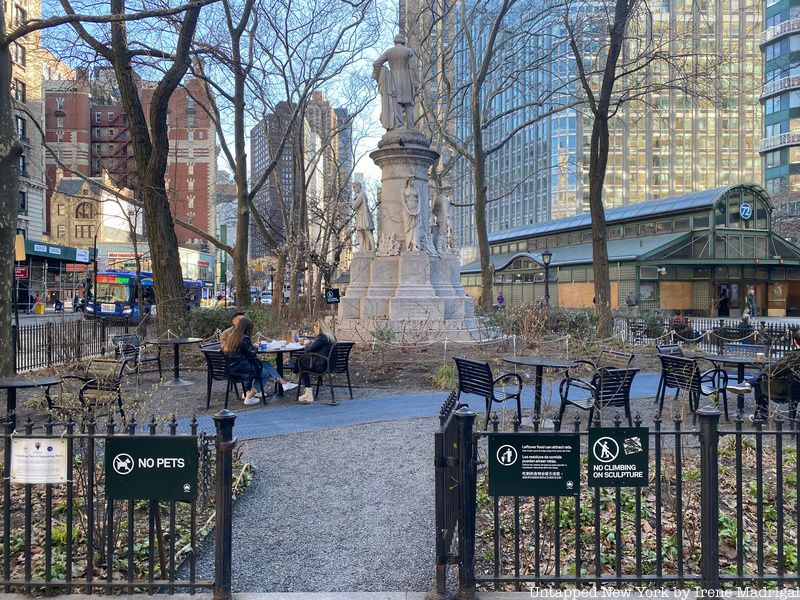
Verdi Square, at 72nd Street and Broadway, was dedicated to the 19th-century Italian composer Giuseppe Verdi, whose operas include Aida, La Traviata, Otello, and Rigoletto. His monument was created as part of a movement to recognize prominent Italians in America. His statue, so situated to permit the composer a view of Lincoln Center, now graces the site in all four seasons.
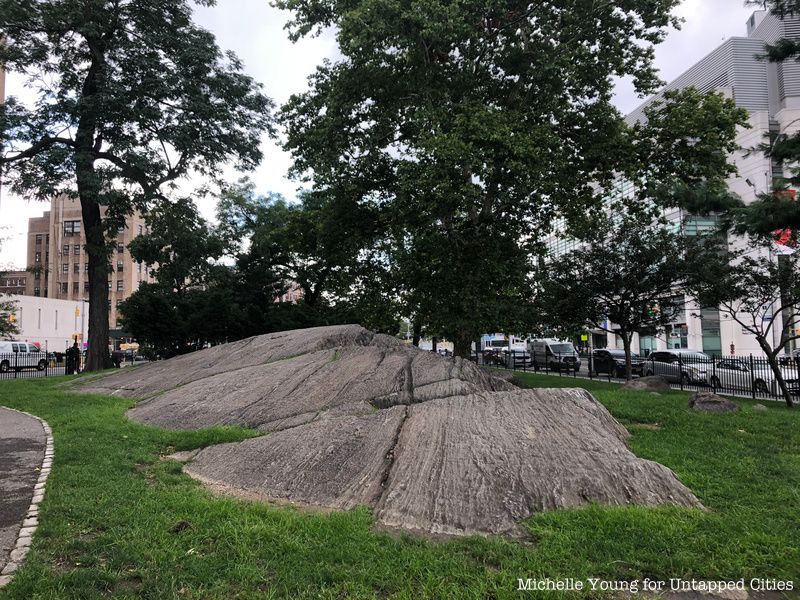
Lastly, and not the least interesting of squares, is Mitchel Square at 166th Street and Broadway. Dedicated to New York City mayor, John Purroy Mitchel. He distinguished his office when he appointed the first woman commissioner, Katerine Bement Davis of the Corrections Department. Mayor Mitchel served one term, some thought due to his snobbishness. At the height of World War I, he enlisted in the Aviation Corps. Tragically, while training in Lake Charles, Louisiana, he fell out of his plane and to his death due to not securing his seat belt.
Besides those aligned along Broadway, other notable squares reflect historical and military figures. Chatham Square in Chinatown is named for the sympathetic British Prime Minister, Will Pitt, Earl of Chatham. Chatham is also known as Kimlau Square for the American World War II pilot. Tompkins Square in the East Village takes its name from the fourth Governor of New York and U.S. Vice President under James Monroe, Daniel D. Tompkins. And, of course, there is Washington Square for our first president.
Lesser-known squares require outstanding street smarts and are more representative of the ethnic mix of the city. A. Philip Randolph Square, at the intersection of St Nicholas and Adam Clayton Powell Blvd, was named for the labor leader and founder of the Pullman union. Peretz Square, on Houston and Avenue A, honors the Yiddish author and essayist.
Next, check out the Top 10 Secrets of Madison Square!
Subscribe to our newsletter